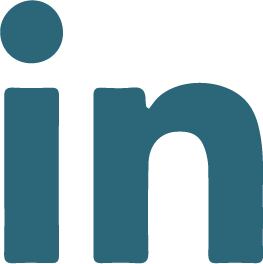This year has been a banner year for IT. It’s only because of IT that so many organizations could continue operating in the face of the pandemic. IT has done its job on winning over the rest of the organization and most of the organizations now know they can count on IT. According to the 2020 Harvey Nash/KPMG CIO Survey, 61% of the 4,200 IT leaders surveyed said that the pandemic has permanently increased the influence of the technology leader. So how can the CIO and IT leverage this new-found influence? How can IT become more than the team that keeps the lights on?
I think that this new influence can help the CIO become the most valuable player on the leadership team because they’re the glue that keeps everything together.
Now, some may argue that the CIO has been thought of only as leading a support team for decades. So they could not in fact be the glue holding an organization together. But that was before the technology boom. Today, technology is a foundational component for every business. From communication to employee experience to the customer journey, technology plays an important role in every piece of every business. As the impact of technology has grown, so must the role of IT. While IT and the CIO used to only solve technology issues, they now must solve business issues because the business needs technology.
That’s why the CIO has the opportunity that no other executive does. No other executive can impact another department as much as the CIO can.
This is, of course, a force that can be used for good – or evil. The CIO can be the bottleneck, holding back every initiative due to poor service or inefficient workflows. But they can also be the hero of the organization: playing an integral,difference-making role in every initiative.
John Bruno, Chief Information Officer at Aon, explains that the CIO role can become “an integrator – someone that works across the entire organization.”
So what can a CIO do begin breaking down the silos and helping other departments?
-
Get out of IT and into other departments.
The biggest problem so many CIOs have is that they can’t see the forest through the trees. Or to put it in more blunt terms, they can’t overcome the IT fire-fights that come up every day to actually get out of IT to see what’s happening in the rest of the organization. It is absolutely imperative that today’s CIOs do this. If you don’t feel that you can see beyond IT issues, then you’re not going to be able to support the organization as you need to because CIOs have to be the integrator. They have to be the ones to connect the dots and it’s impossible to do without collaborating with other executives and understanding what is occurring in their departments.
What would happen if you as the CIO were able to take 2-3 hours a week to meet with other executives to understand their initiatives – and how IT can help make those initiatives successful? What would it cost you? If your IT organization were to implode because the CIO took 2-3 hours every week to work with other departments rather than help put out IT fires, then your approach to service management needs attention. The right service management workflows and foundation ensure that IT runs smoothly and is able to serve the organization, while the CIO works to innovate other areas of the organization. If you’re struggling to even find the time to work with other departments and trust that your IT team can keep running, it’s time to clean up your service management. Book a consultation with me and we can discuss how to get started.
-
Identify the impact of technology in other department initiatives
As I said earlier, technology is the thread that ties everything together and as the CIO, you hold the thread. You should be actively looking for ways to enhance other department initiatives with technology.
In the old days of IT, many CIOs would roll their eyes at the idea of making more work for themselves by collaborating with other departments. But today, the innovative CIO knows that it’s not about making more work for IT. It’s about unlocking opportunities for IT to step up and play a more influential role in the organization.
That means that CIOs have to get comfortable offering suggestions and solutions to other executives. Imagine what would happen if a CIO offered to support the head of HR in automating and digitizing the employee onboarding process. Imagine HR and IT co-creating that solution together, instead of HR assuming what technology they needed or IT forcing a solution upon HR without even understanding the complexity of the problem.
Instead of a forced solution where neither side is happy, everyone would walk away with a collaborative outcome that improved the business overall.
And this isn’t just an HR opportunity. The CIO could do this for every other department. Because you as the CIO are the expert in technology, you can offer your expertise to every area of the organization.
How to Get Started
First, before you start working with any other department, you need to be certain that IT can operate efficiently. That means optimizing workflows and identifying any gaps in your service delivery. You can’t offer value to anyone else without first cleaning up your own department. (And if you need help, that’s my specialty! Book a consultation here.)
Once you’ve done that, begin forming partnerships with other executives. Invite them to ongoing meetings to learn about their initiatives and technology needs. If you approach this partnership as an opportunity for their department to achieve their initiatives faster and with less resistance from IT, then they are going to be onboard with working with you.
Slowly but surely, you can begin to work with every department in this manner and before you know it, the CIO has not only elevated the status of IT but also the entire organization.
Share


